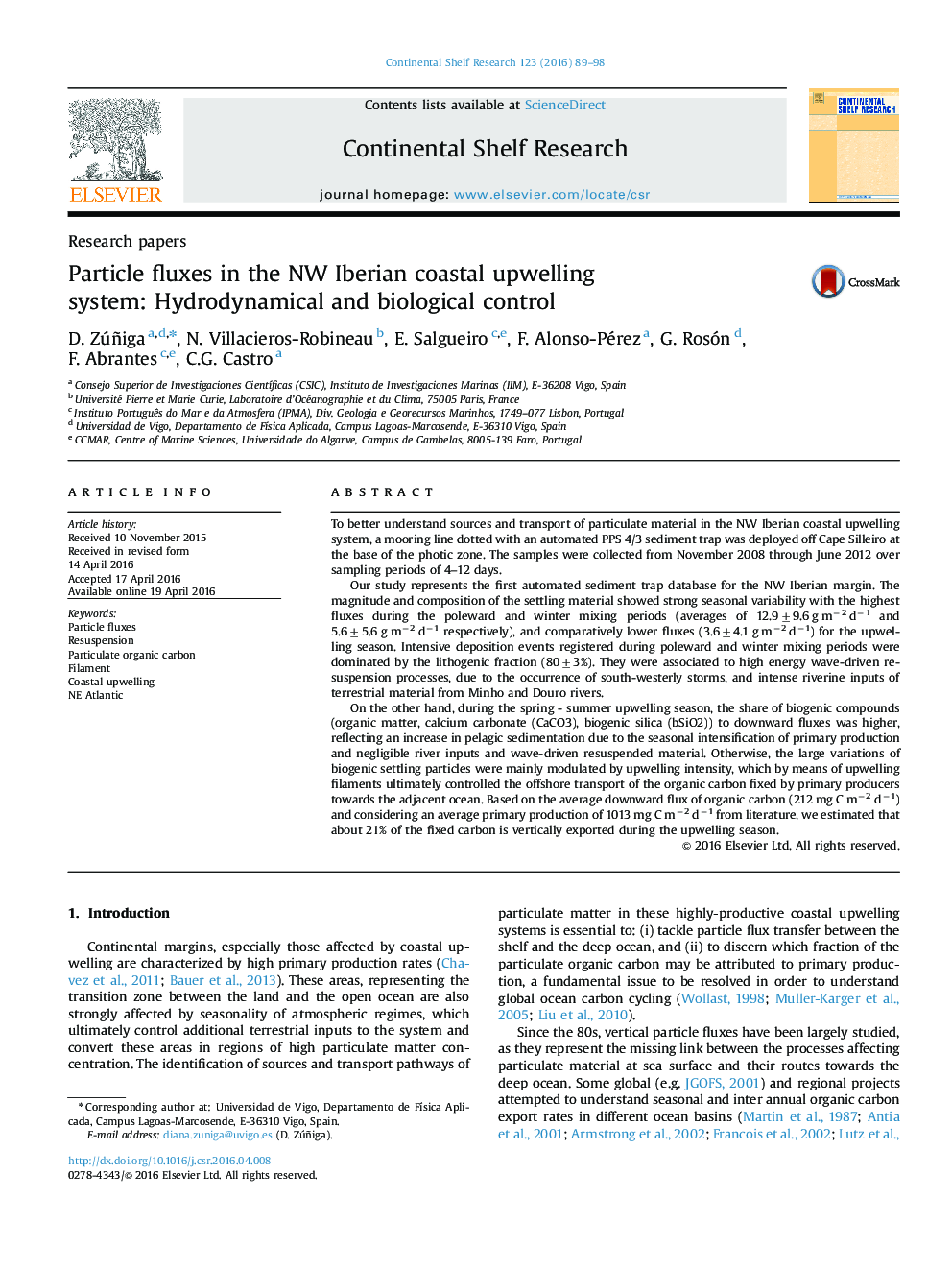| کد مقاله | کد نشریه | سال انتشار | مقاله انگلیسی | نسخه تمام متن |
|---|---|---|---|---|
| 4531556 | 1626090 | 2016 | 10 صفحه PDF | دانلود رایگان |
• Particle fluxes in NW Iberian upwelling system showed strong seasonal variability.
• Resuspension and river inputs controlled large deposition events during autumn/winter.
• Upwelling encourages offshore particles transport through water filaments formation.
• ~20% of particulate organic carbon attributed to primary production sinks on shelf.
To better understand sources and transport of particulate material in the NW Iberian coastal upwelling system, a mooring line dotted with an automated PPS 4/3 sediment trap was deployed off Cape Silleiro at the base of the photic zone. The samples were collected from November 2008 through June 2012 over sampling periods of 4–12 days.Our study represents the first automated sediment trap database for the NW Iberian margin. The magnitude and composition of the settling material showed strong seasonal variability with the highest fluxes during the poleward and winter mixing periods (averages of 12.9±9.6 g m−2 d−1 and 5.6±5.6 g m−2 d−1 respectively), and comparatively lower fluxes (3.6±4.1 g m−2 d−1) for the upwelling season. Intensive deposition events registered during poleward and winter mixing periods were dominated by the lithogenic fraction (80±3%). They were associated to high energy wave-driven resuspension processes, due to the occurrence of south-westerly storms, and intense riverine inputs of terrestrial material from Minho and Douro rivers.On the other hand, during the spring - summer upwelling season, the share of biogenic compounds (organic matter, calcium carbonate (CaCO3), biogenic silica (bSiO2)) to downward fluxes was higher, reflecting an increase in pelagic sedimentation due to the seasonal intensification of primary production and negligible river inputs and wave-driven resuspended material. Otherwise, the large variations of biogenic settling particles were mainly modulated by upwelling intensity, which by means of upwelling filaments ultimately controlled the offshore transport of the organic carbon fixed by primary producers towards the adjacent ocean. Based on the average downward flux of organic carbon (212 mg C m−2 d−1) and considering an average primary production of 1013 mg C m−2 d−1 from literature, we estimated that about 21% of the fixed carbon is vertically exported during the upwelling season.
Journal: Continental Shelf Research - Volume 123, 15 July 2016, Pages 89–98
